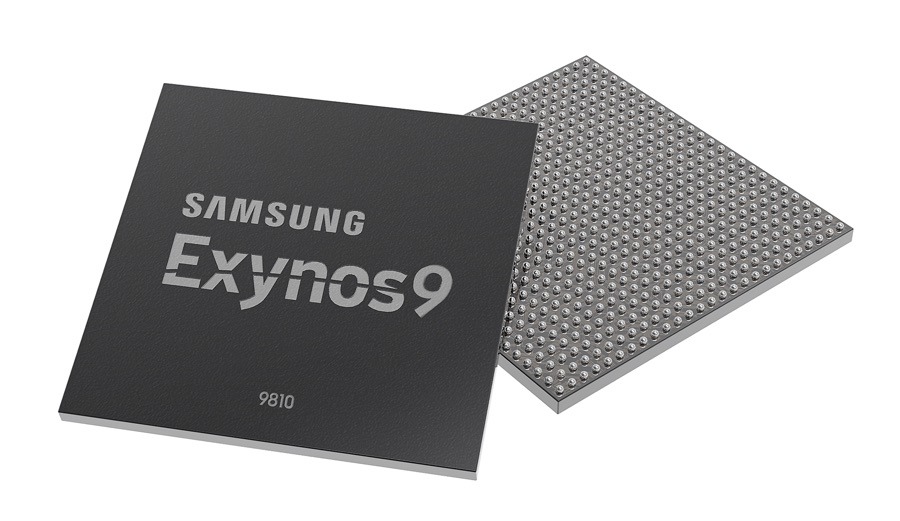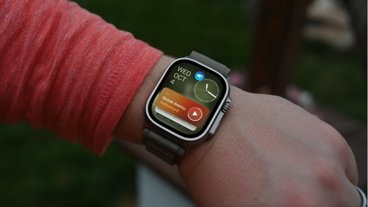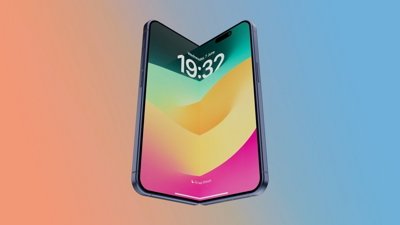Samsung has launched its newest application processor for mobile devices, the Exynos 9 Series 9810, but claimed new features to the processor line, including depth-sensing face detection and deep learning capabilities, suggest Samsung may be borrowing some concepts from in Apple's A11 Bionic, used in the iPhone 8 and iPhone X.
The Exynos 9810, made using Samsung's second-generation 10-nanometer FinFET process, consists of a third-generation custom CPU with eight cores, consisting of four high-powered cores clocked at 2.9GHz combined with four others optimized for efficiency. Using an improved architecture, it is claimed to have double the single-core performance compared to its predecessor, while multi-core performance is said to be increased by around 40 percent.
Notably for this launch, Samsung is touting the chip's capabilities relating to image processing and "neural network-based deep learning," in what could be considered an attempt to match Apple and the new features introduced with the iPhone X.
"This cutting-edge technology allows the processor to accurately recognize people or items in photos for fast image searching or categorization, or through deep sensing, scan a user's face in 3D for hybrid face detection," Samsung's press release states. "By utilizing both hardware and software, hybrid face detection enables realistic face tracking filters as well as stronger security when unlocking a device with one's face."
Apple's A11 Bionic processor has a "Neural Engine" which is used to power the iPhone X's Face ID, taking data from the TrueDepth camera array and creating a depth map of the user's face and comparing it to a previously registered face. This processing and hardware combination is also used for face tracking functions in apps, such as the massively popular Animoji.
Samsung notes "for added security, the processor has a separate security processing unit to safeguard vital personal data such as facial, iris, and fingerprint information." This also sounds similar to the Secure Enclave, another well-known feature of Apple's mobile devices used for storing a user's biometric data.
While this may be seen as an attempt by Samsung to copy Apple, it is worth highlighting that Samsung introduced a facial recognition system in the Galaxy S8, though it was quickly found to be defeated by a photograph of the registered user.
The detailing of the features does suggest Samsung's moving in the same direction as Apple regarding its security, though it also does largely depend on the implementation on a future device as to how closely the two security systems line up. For example, while Apple's TrueDepth camera uses a variety of sensors, Samsung does not describe how its own "hybrid face detection" system works nor the required components used for it to function.
The Exynos 9810's image processing and use of an upgraded multi-format codec reportedly offers advanced image stabilization for photographs and UHD video, with reduced noise and motion blur, and "real-time out-of-focus photography in (a) high resolution." Video recording and playback at UHD resolution at 120 frames per second is also touted, along with 10-bit HEVC and VP9 codec support.
The included LTE modem in the Exynos 9810 is claimed to be the first 1.2 gigabits per second model, as well as the "industry's first" Cat.18 LTE modem to support up to 6 times carrier aggregation for a 1.2 gigabit downlink and 200 megabits per second uplink. The modem also supports 4x4 MIMO and 256-QAM (Quadrature Amplification Modulation) to maximize transfer rates.
Samsung advises that the Exynos 9 Series 9810 is currently in mass production, which strongly suggests it will be used in the "Galaxy S9," this year's release of the flagship product line.
 Malcolm Owen
Malcolm Owen







-m.jpg)






 William Gallagher
William Gallagher
 Andrew O'Hara
Andrew O'Hara
 Andrew Orr
Andrew Orr







-m.jpg)






42 Comments
Quel supris.
Still, photocopying the Apple brochure is one thing, getting it to work as well is another.
What? They announced a chip without announcing the product that will use it? Well I’m sure Android P will have deep feature integration with this... /s
To give everyone an idea of performance based on Samsung's claims:
Apple A10 (iPhone 7 Plus)
-Geekbench Single Core: 3,438
-Geekbench Multi Core: 5,723
-3DMark Sling Shot Extreme (Metal): 1,986
Exynos 8895 (Galaxy S8)
-Geekbench Single Core: 1,956
-Geekbench Multi Core: 6,432
-3DMark Sling Shot Extreme (OpenGL): 3,142
Apple A11 (iPhone X)
-Geekbench Single Core: 4,203
-Geekbench Multi Core: 10,103
-3DMark Sling Shot Extreme (Metal): 2,691
Exynos 9810 (expected performance)
-Geekbench Single Core: 3,912 (2x performance increase)
-Geekbench Multi Core: 9,005 (1.4x performance increase)
-3DMark Sling Shot Extreme (OpenGL): 3,770 (1.2x performance increase)
Geekbench values: https://browser.geekbench.com/
3DMark values: https://www.futuremark.com/hardware/mobile
It looks like Samsung will extend their graphics lead and start approaching Apple in single core and multi core performance. It's clear that Apple has a decent lead in CPU performance.
Samsung's motto is, "Anything Apple can do, we can do better." That probably applies to all of Samsung's business model concerning all companies. Samsung always stays hungry, constantly nipping at the butts of rival companies. If Apple had the same philosophy, they might have mostly wiped out the Android platform by now. However, passive Apple is now the only company that remains on the doomed list and doesn't even come close to having the high value of any FANG stock or even Microsoft. Android is still getting stronger in terms of outright unit numbers and that's all Wall Street cares about
I don't have a clue as to what Apple needs to do to crush Samsung's smartphone business and at this point it may be too late. The tech-critics are going to heap mountains of praise for the Galaxy S9, saying how much better it is than the iPhone X and there's nothing Apple can really do about it. It will just be business as usual for Apple.